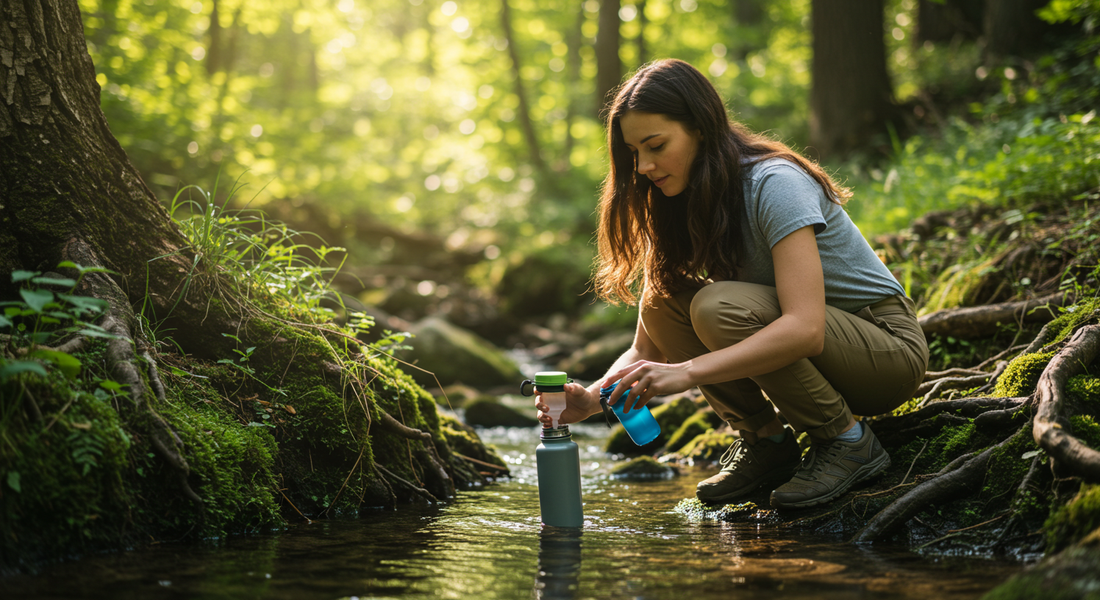
Finding and Purifying Water in the Wild: A Step-by-Step Guide
Share

In any survival situation, your priorities are dictated by the "Rule of 3s": you can survive roughly 3 minutes without air, 3 hours without shelter in extreme conditions, 3 days without water, and 3 weeks without food. This rule makes one thing abundantly clear: after securing your immediate safety, water is your absolute top priority. The water problem is twofold: first, you have to find it, and second, you have to make it safe to drink. This guide will walk you through the essential steps for both.
How to Find Natural Water Sources
Learning how to find water in the wild is a skill of observation. Nature provides many clues if you know what to look for.
-
Read the Landscape: Water always flows downhill. Look for valleys, low-lying areas, and ravines. Following these natural depressions will often lead you to a stream or a pool of collected water. Also, look for lush, green vegetation lines, especially in an otherwise dry area. A patch of vibrant green often indicates a nearby spring or a high water table.
-
Look for Signs of Wildlife: Animals need water just as much as we do. Look for animal tracks, especially multiple tracks that converge into a single trail. These trails often lead directly to a water source. The presence of insects, especially mosquitoes, and birds circling in the sky can also be strong indicators of nearby water.
-
Collect Rainwater and Dew: Don't overlook the water that comes from the sky. Use a tarp or a poncho to create a large collection surface to funnel rainwater into a container. In the early morning, you can collect dew by tying a bandana or absorbent cloth around your ankles and walking through tall grass, then wringing out the collected moisture.
Step 1: Pre-Filtering
Once you've found a water source, you'll likely notice that it's full of sediment, leaves, and other debris. You must pre-filter this out before proceeding to the main purification step.
-
Use a Bandana or Cloth: A simple but effective method is to stretch a bandana, a t-shirt, or another piece of cloth over the mouth of your water container. Pour the water through the cloth to strain out all the large particles. This will not make the water safe to drink, but it will prevent your main filter from clogging and improve the taste after purification.
Step 2: Main Purification Methods
This is the most critical step. All natural water sources, no matter how clear they look, are teeming with invisible pathogens—bacteria (like E. coli), protozoa (like Giardia), and viruses that can make you severely ill. Knowing how to purify water survival style is essential.
-
Boiling: The Most Definitive Method: Boiling is the gold standard for water purification. Bringing water to a rolling boil for at least one minute (or three minutes at elevations above 6,500 feet) will kill virtually all viruses, bacteria, and protozoa. It's the most reliable method, assuming you have a way to make a fire and a metal container.
-
Filtering: Portable Water Filters: Modern portable water filters (like the Sawyer Squeeze or Lifestraw) are incredibly effective and convenient. They work by forcing water through a micro-filter that physically removes bacteria and protozoa. Note: Most common backpacking filters do not remove viruses, which are much smaller.
-
Chemical Treatment: Purification Tablets: Iodine or chlorine dioxide tablets are a lightweight, easy-to-use backup method. You simply drop a tablet into your water bottle and wait, usually for 30 minutes to 4 hours, depending on the product and water temperature. The downside is the chemical taste they can leave behind.
Conclusion: The Layered Safety Approach
The boiling vs filtering water debate has a simple answer for the truly cautious survivor: do both when possible. The safest approach is a layered one. Use your portable filter first to remove bacteria and protozoa, which also improves the water's taste. Then, if you have the means and are concerned about viruses, bring that filtered water to a boil. This redundancy guarantees the safest possible drinking water. Whatever method you choose, the most important rule is to never take a chance with untreated water. The risk of debilitating illness in a survival situation is one you can't afford to take.
